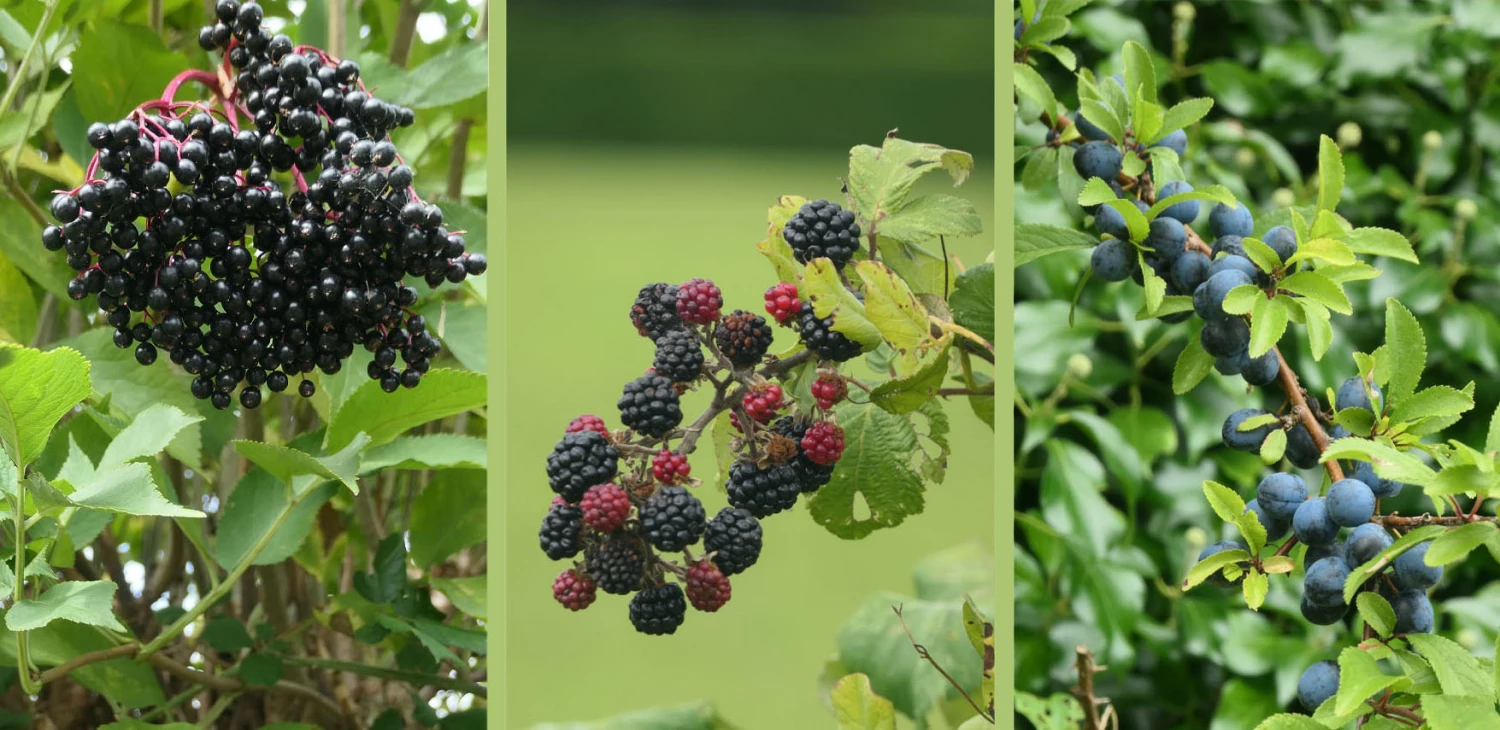Foraging time!
What to do with all that fruit?
Taking a walk at the weekend I noticed our hedgerows are starting to deliver an abundance of berries and fruits. Who could be bored with blackberry and apple crumble, sloe gin or elderberry cordial? But there's so much more to be done.
How about an autumn berry wine – luscious, rich and red, I made this a few years ago and it proved to be quite popular, shall we say!
So take your basket with you next time you go for a wander and, to make about a gallon of wine,
(4.5 litres if you work in new money) here's a recipe for you.
Stuff you'll need
Big bucket
Demijohn/fermenting vessel (1 gallon)
1 airlock and bung
Syphon tube
Bottles/stoppers – re-use your screw top wine bottles
Ingredients
About 2 lb/900g each of
Elderberries
Blackberries
Sloes
Blackcurrants (they were a bit earlier, but still some in the freezer here. Otherwise make up the quantity with the other black fruits)
150 ml/ quarter pint red grape concentrate or, more traditionally, a half pound/225g of raisins
3lb/1.3g of ordinary sugar
A pack of port yeast, 1 vitamin B1* tablet, 2 teaspoons of pectolase* (all available from local shops – Somerton and Ilminster for e.g. and probably on-line too)
Water
And here's the how
Lightly smush the fruit in a big polythene bucket (preferably clean, not one you've collected manure in, though it might add a certain je ne sais quoi!)
Just cover the sugar with some water in a largish pan and bring it to the boil, then pour it over that crushed fruit
Leave it to cool, then stir in the grape concentrate and pectolase
Leave it overnight (loosely covered) and the following day add the vitamin B1, yeast and about 4.5 pints (2.5 litres) of water
Loosely cover again and let it ferment for about 5 days to a week before straining the liquid off the pulp into a 1 gallon demijohn/fermenting vessel and top up with water to the bottom of the neck
Fit your bung and airlock and leave it alone for a couple of months. You will notice the wine starting to clear from the top down, leaving a thick sediment on the bottom
Now you can 'rack' the wine – syphon it off into a clean vessel, topping up again to the bottom of the neck if necessary with a little sugar and water mixture – say 3 oz sugar/half a pint water – and leave it again
You can repeat the 'racking' process in another couple of months (minus adding the sugar as this'll just restart the fermentation) and again until a clear liquid is produced
Bottle it once fermentation has finished – if it hasn't finished you'll get fermentation in bottle which you don't want – burst bottles! Some winemakers advocate adding one crushed campden tablet to a gallon of liquid to halt fermentation at this stage.
Drink it!
* Pectin naturally occurs in fruit and is what makes it 'set' as in jam making. You don't necessarily want that in your wine – it wont set, but it will remain hazy/cloudy. Pectolase breaks down the pectin and helps extract more flavour from the pulp
* Vitamin B1 is an activator – it 'kick starts' fermentation and helps the yeast grow and multiply during the fermentation process
Get In Touch
CurryRivelOnline is powered by our active community.
Please send us your news and views.
Email: editor@curryrivel.org.uk






